 Frail older adults face unique challenges that may lead to discouragement, decreased food consumption, and irregular eating patterns, which can further lead to various nutrient deficiencies. Simple, nutritious snacks that are easy to eat are a great way to add nutritious foods to their diet. This 3-page fact sheet provides several easy snack ideas. Written by Paula G. Harris-Swiatko and Wendy J. Dahl, and published by the UF Department of Food Science and Human Nutrition, March 2013.
Frail older adults face unique challenges that may lead to discouragement, decreased food consumption, and irregular eating patterns, which can further lead to various nutrient deficiencies. Simple, nutritious snacks that are easy to eat are a great way to add nutritious foods to their diet. This 3-page fact sheet provides several easy snack ideas. Written by Paula G. Harris-Swiatko and Wendy J. Dahl, and published by the UF Department of Food Science and Human Nutrition, March 2013.
http://edis.ifas.ufl.edu/fs214
Author: dihagan
EPA’s Endocrine Disruptor Screening Program (EDSP) (PI227)
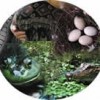 People have asked questions in recent years concerning the effects that certain chemicals may have on the endocrine system of humans and wildlife. Laboratory studies have produced evidence that show various chemicals disrupt the endocrine systems of animals. Other evidence has shown that the endocrine systems of certain fish and wildlife species have been affected by chemical contaminants. Do some of these same chemical contaminants also affect the human endocrine system? Do pesticides cause these effects? The relationship between human diseases of the endocrine system and exposure to environmental contaminants is poorly understood and controversial. This 2-page fact sheet discusses the U.S. Environmental Protection Agency’s (EPA) screening program for potential effects to the endocrine system caused by pesticide exposure. Written by F.M. Fishel, and published by the UF Department of Agronomy, March 2013.
People have asked questions in recent years concerning the effects that certain chemicals may have on the endocrine system of humans and wildlife. Laboratory studies have produced evidence that show various chemicals disrupt the endocrine systems of animals. Other evidence has shown that the endocrine systems of certain fish and wildlife species have been affected by chemical contaminants. Do some of these same chemical contaminants also affect the human endocrine system? Do pesticides cause these effects? The relationship between human diseases of the endocrine system and exposure to environmental contaminants is poorly understood and controversial. This 2-page fact sheet discusses the U.S. Environmental Protection Agency’s (EPA) screening program for potential effects to the endocrine system caused by pesticide exposure. Written by F.M. Fishel, and published by the UF Department of Agronomy, March 2013.
http://edis.ifas.ufl.edu/pi227
Costos Estimados en el 2010 para Establecer y Producir Pitaya (Fruta Dragón) en el Sur de Florida (FE921)
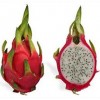 Como consecuencia de la creciente competencia extranjera y la disminución de rendimientos de los productos agrícolas tradicionales, muchos productores en el Sur de la Florida se han embarcado en una búsqueda agresiva de productos agrícolas que sean alternativas viables. Un producto que ha llamado la atención es la pitaya, una especie de cactus trepador autóctona de las regiones de bosques tropicales de México, Centroamérica y América del Sur. De menos de 50 hectáreas plantadas en la Florida en fecha tan reciente como 2006, la producción se ha multiplicado por seis y ahora se estima en alrededor de 320 acres. This 6-page fact sheet was written by Edward A. Evans, Jordan Huntley, Jonathan Crane, and Allen F. Wysocki, and published by the UF Department of Food and Resource Economics, March 2013.
Como consecuencia de la creciente competencia extranjera y la disminución de rendimientos de los productos agrícolas tradicionales, muchos productores en el Sur de la Florida se han embarcado en una búsqueda agresiva de productos agrícolas que sean alternativas viables. Un producto que ha llamado la atención es la pitaya, una especie de cactus trepador autóctona de las regiones de bosques tropicales de México, Centroamérica y América del Sur. De menos de 50 hectáreas plantadas en la Florida en fecha tan reciente como 2006, la producción se ha multiplicado por seis y ahora se estima en alrededor de 320 acres. This 6-page fact sheet was written by Edward A. Evans, Jordan Huntley, Jonathan Crane, and Allen F. Wysocki, and published by the UF Department of Food and Resource Economics, March 2013.
http://edis.ifas.ufl.edu/fe921
Developing Urban Community Garden Projects (WC139)
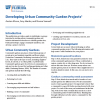 Community gardens are pieces of land where groups of people grow and maintain vegetable and flower plants. They exist in all types of areas, including neighborhoods, at schools, or on other public or private lands. Community gardens grow food for local consumption or sale and can also be used for teaching gardening and other skills This 7-page fact sheet provides a guide to individuals or groups interested in starting urban community gardens and includes information about how to identify garden sites, build partnerships, engage community members, and develop a project overview. Written by Austen Moore, Amy Harder, and Norma Samuel, and published by the UF Department of Agricultural Education and Communication, March 2013.
Community gardens are pieces of land where groups of people grow and maintain vegetable and flower plants. They exist in all types of areas, including neighborhoods, at schools, or on other public or private lands. Community gardens grow food for local consumption or sale and can also be used for teaching gardening and other skills This 7-page fact sheet provides a guide to individuals or groups interested in starting urban community gardens and includes information about how to identify garden sites, build partnerships, engage community members, and develop a project overview. Written by Austen Moore, Amy Harder, and Norma Samuel, and published by the UF Department of Agricultural Education and Communication, March 2013.
http://edis.ifas.ufl.edu/wc139
Opciones de gestion agronomica para la variabilidad y para el cambio climatico: El riego localizado (HS1212)
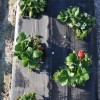 Esta publicación se enfoca en el uso del riego localizado para mejorar los sistemas de producción. This 5-page fact sheet was written by Lincoln Zotarelli, Clyde Fraisse, and Daniel Dourte, and published by the UF Department of Horticultural Sciences, January 2013.
Esta publicación se enfoca en el uso del riego localizado para mejorar los sistemas de producción. This 5-page fact sheet was written by Lincoln Zotarelli, Clyde Fraisse, and Daniel Dourte, and published by the UF Department of Horticultural Sciences, January 2013.
http://edis.ifas.ufl.edu/hs1212
Trastornos fisiologicos de la papa: Centro marron y Corazon hueco (HS1214)
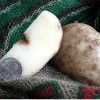 El centro marrón y el corazón hueco son trastornos fisiológicos internos no-infecciosos del tubérculo de la papa. Un centro marrón (también llamado corazón incipiente y hueco, corazón marrón o centro de azúcar) se caracteriza por una región muerta en las células de la médula de los tubérculos lo que resulta en un tejido de color marrón. This 3-page fact sheet was written by L. Zotarelli, C. Hutchinson, S. Byrd, D. Gergela, y D. L. Rowland, and published by the UF Department of Horticultural Sciences, January 2013.
El centro marrón y el corazón hueco son trastornos fisiológicos internos no-infecciosos del tubérculo de la papa. Un centro marrón (también llamado corazón incipiente y hueco, corazón marrón o centro de azúcar) se caracteriza por una región muerta en las células de la médula de los tubérculos lo que resulta en un tejido de color marrón. This 3-page fact sheet was written by L. Zotarelli, C. Hutchinson, S. Byrd, D. Gergela, y D. L. Rowland, and published by the UF Department of Horticultural Sciences, January 2013.
http://edis.ifas.ufl.edu/hs1214
Manejo de malezas en las papas (HS1213)
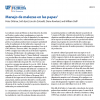 Las malezas causan problemas en la producción de patata en Florida y puede reducir rendimientos a través de competencia directa por la luz, la humedad y los nutrientes, o por albergar insectos y enfermedades que atacan las patatas. This 4-page fact sheet was written by Peter Dittmar, Seth Byrd, Lincoln Zotarelli, Diane Rowland, and William Stall, and published by the UF Department of Horticultural Sciences, January 2013.
Las malezas causan problemas en la producción de patata en Florida y puede reducir rendimientos a través de competencia directa por la luz, la humedad y los nutrientes, o por albergar insectos y enfermedades que atacan las patatas. This 4-page fact sheet was written by Peter Dittmar, Seth Byrd, Lincoln Zotarelli, Diane Rowland, and William Stall, and published by the UF Department of Horticultural Sciences, January 2013.
http://edis.ifas.ufl.edu/hs1213
Trastornos fisiologicos de la papa: Grietas de Crecimiento (HS1211)
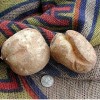 Las grietas de crecimiento son un trastorno fisiológigo externo no infeccioso del tubérculo de la papa en el que el tubérculo se agrieta durante el crecimiento. La bendidura se cura, pero deja una fisura en el tubérculo. This 3-page fact sheet was written by L. Zotarelli, C. Hutchinson, S. Byrd, D. Gergela, y D. L. Rowland, and published by the UF Department of Horticultural Sciences, January 2013.
Las grietas de crecimiento son un trastorno fisiológigo externo no infeccioso del tubérculo de la papa en el que el tubérculo se agrieta durante el crecimiento. La bendidura se cura, pero deja una fisura en el tubérculo. This 3-page fact sheet was written by L. Zotarelli, C. Hutchinson, S. Byrd, D. Gergela, y D. L. Rowland, and published by the UF Department of Horticultural Sciences, January 2013.
http://edis.ifas.ufl.edu/hs1211
Children and Pesticides (PI226)
 Children act fast, but so do poisons, including pesticides. Fortunately for most parents, their children are not harmed when the parents have a momentary lapse and aren’t supervising them for a short time. But how would parents respond if they suddenly turn around, and their toddler is holding a can of household aerosol insect killer? This 3-page fact sheet outlines some facts and precautionary measures regarding children and pesticides in the home environment, so parents have a better idea of how to keep harmful chemical products away from their children. Written by F.M. Fishel, and published by the UF Department of Agronomy, March 2013.
Children act fast, but so do poisons, including pesticides. Fortunately for most parents, their children are not harmed when the parents have a momentary lapse and aren’t supervising them for a short time. But how would parents respond if they suddenly turn around, and their toddler is holding a can of household aerosol insect killer? This 3-page fact sheet outlines some facts and precautionary measures regarding children and pesticides in the home environment, so parents have a better idea of how to keep harmful chemical products away from their children. Written by F.M. Fishel, and published by the UF Department of Agronomy, March 2013.
http://edis.ifas.ufl.edu/pi226
Blue Orchard Bee, Osmia lignaria Say (Insecta: Hymenoptera: Megachilidae) (EENY549/IN982)
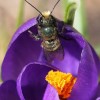 The blue orchard bee, Osmia lignaria Say (Fig. 1), is a solitary mason bee native to the west coast of the United States and Canada. It is of great interest for use as a native pollinator of fruit trees and blueberries, and is easily managed due to its favorable biological characteristics. Blue orchard bees can be purchased online for pollination, and they are shipped as pupae ready to emerge in the spring. This 4-page fact sheet was written by Alden Estep, Catherine Zettel-Nalen, and James Ellis, and published by the UF Department of Entomology and Nematology, March 2013.
The blue orchard bee, Osmia lignaria Say (Fig. 1), is a solitary mason bee native to the west coast of the United States and Canada. It is of great interest for use as a native pollinator of fruit trees and blueberries, and is easily managed due to its favorable biological characteristics. Blue orchard bees can be purchased online for pollination, and they are shipped as pupae ready to emerge in the spring. This 4-page fact sheet was written by Alden Estep, Catherine Zettel-Nalen, and James Ellis, and published by the UF Department of Entomology and Nematology, March 2013.
http://edis.ifas.ufl.edu/in982
Pureed Foods, Thickened Beverages, and Water Needs (FSHN1301/FS218)
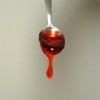 Thickened liquids are often recommended for individuals who have problems swallowing thin liquids. Juice, milk, water, and even coffee can be thickened. Pre-thickened beverages are available commercially, or they can be prepared with various commercial thickeners. This 4-page fact sheet describes various consistencies of thickness, how much water various puréed foods contribute. Written by Wendy J. Dahl, and published by the UF Department of Food Science and Human Nutrition, March 2013.
Thickened liquids are often recommended for individuals who have problems swallowing thin liquids. Juice, milk, water, and even coffee can be thickened. Pre-thickened beverages are available commercially, or they can be prepared with various commercial thickeners. This 4-page fact sheet describes various consistencies of thickness, how much water various puréed foods contribute. Written by Wendy J. Dahl, and published by the UF Department of Food Science and Human Nutrition, March 2013.
http://edis.ifas.ufl.edu/fs218
Unplanned Pregnancy's Effects on Mothers and Children (FAR5124/FM1050)
 “Nearly half of all pregnancies in the US today are unplanned. Though this surprise can be a wonderful one, it can also be a difficult adjustment. Indeed, some studies connect unplanned pregnancies with higher levels of stress and depression in mothers in the early months. But could the aftereffects of an unintended pregnancy linger even longer? …”
“Nearly half of all pregnancies in the US today are unplanned. Though this surprise can be a wonderful one, it can also be a difficult adjustment. Indeed, some studies connect unplanned pregnancies with higher levels of stress and depression in mothers in the early months. But could the aftereffects of an unintended pregnancy linger even longer? …”
This 2-page Family Album Radio transcript was written by Carol Church, and published by the UF Department of Family Youth and Community Sciences, February 2013.
http://edis.ifas.ufl.edu/fm1050
Aging in Place Is a New Life Stage (FAR6061/FM1049)
 “Many families today face tough decisions about how to assist elderly relatives when they need some extra help with daily living. Unsurprisingly, many such adults want to remain in their own homes where they feel most comfortable…” This 2-page Family Album Radio transcript was written by Carol Church, and published by the UF Department of Family Youth and Community Sciences, February 2013.
“Many families today face tough decisions about how to assist elderly relatives when they need some extra help with daily living. Unsurprisingly, many such adults want to remain in their own homes where they feel most comfortable…” This 2-page Family Album Radio transcript was written by Carol Church, and published by the UF Department of Family Youth and Community Sciences, February 2013.
http://edis.ifas.ufl.edu/fm1049
Quality Childcare Now, More Involvement with School and Teachers Later (FAR0616/FM0148)
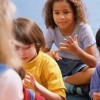 “Most employed parents of young children would agree that it can sometimes be difficult to put their sons and daughters in the care of others during the workday. Feeling confident about the quality of these daycare arrangements can make all the difference to parents’ peace of mind…”This 2-page Family Album Radio transcript was written by Carol Church, and published by the UF Department of Family Youth and Community Sciences, February 2013.
“Most employed parents of young children would agree that it can sometimes be difficult to put their sons and daughters in the care of others during the workday. Feeling confident about the quality of these daycare arrangements can make all the difference to parents’ peace of mind…”This 2-page Family Album Radio transcript was written by Carol Church, and published by the UF Department of Family Youth and Community Sciences, February 2013.
http://edis.ifas.ufl.edu/fm1048
Homeless Children Need Preschool (FAR0615/FM1047)
 “During the recent recession, news reports included some sobering video footage from an area surrounding what’s sometimes called the happiest place on earth, Disney World. Unfortunately, climbing unemployment and home foreclosures in the region had left many middle- and working-class families suddenly homeless. Their new, temporary dwelling places were hotel rooms, the couches of friends and family members, homeless shelters, or the family car…” This 2-page Family Album Radio transcript was written by Suzanna Smith, and published by the UF Department of Family Youth and Community Sciences, February 2013.
“During the recent recession, news reports included some sobering video footage from an area surrounding what’s sometimes called the happiest place on earth, Disney World. Unfortunately, climbing unemployment and home foreclosures in the region had left many middle- and working-class families suddenly homeless. Their new, temporary dwelling places were hotel rooms, the couches of friends and family members, homeless shelters, or the family car…” This 2-page Family Album Radio transcript was written by Suzanna Smith, and published by the UF Department of Family Youth and Community Sciences, February 2013.
http://edis.ifas.ufl.edu/fm1047
Foster Parenting (FAR0008/FM065)
 “Eddie Murphy, Duane Culpepper, Superman, Marilyn Monroe, Alonzo Mourning, Cher, Ice T, John Lennon, James Dean, and Babe Ruth: What do all these people have in common? They were foster kids! Foster parenting is a job that gets little attention and is in great demand. It involves taking a child into your home: a child who has been abused, neglected, or abandoned, or whose primary caregivers are unable to meet their parenting duties—and caring for them as if they are one of your own…” This 2-page Family Album Radio transcript was written by Amanda Quaas and Suzanna Smith, and published by the UF Department of Family Youth and Community Sciences, February 2013.
“Eddie Murphy, Duane Culpepper, Superman, Marilyn Monroe, Alonzo Mourning, Cher, Ice T, John Lennon, James Dean, and Babe Ruth: What do all these people have in common? They were foster kids! Foster parenting is a job that gets little attention and is in great demand. It involves taking a child into your home: a child who has been abused, neglected, or abandoned, or whose primary caregivers are unable to meet their parenting duties—and caring for them as if they are one of your own…” This 2-page Family Album Radio transcript was written by Amanda Quaas and Suzanna Smith, and published by the UF Department of Family Youth and Community Sciences, February 2013.
http://edis.ifas.ufl.edu/fm065
Dealing with Picky Eaters (FAR8003/FM017)
 “There were motivations to eat that many baby boomers heard as they were growing up. Families across America were learning how to eat by the rules. But, according to current research, those rules may have done more harm than good…” This 2-page Family Album Radio transcript was written by Donna Davis, and published by the UF Department of Family Youth and Community Sciences, February 2013.
“There were motivations to eat that many baby boomers heard as they were growing up. Families across America were learning how to eat by the rules. But, according to current research, those rules may have done more harm than good…” This 2-page Family Album Radio transcript was written by Donna Davis, and published by the UF Department of Family Youth and Community Sciences, February 2013.
http://edis.ifas.ufl.edu/fm017
Why Fragile Families Don’t Marry (FAR3003/FM013)
 “He can’t support us. Why should I marry him?” This mom is not alone in her resistance to matrimony. In fact, increasing evidence has many of the opponents of the Healthy Marriage Initiative on the offensive. While the reauthorization of the welfare reform bill will allocate substantial funds to states for the development of programs for improving relations between unmarried parents, those who challenge the bill argue that marriage is not the answer… This 2-page Family Album Radio transcript was written by Donna Davis, and published by the UF Department of Family Youth and Community Sciences, February 2013.
“He can’t support us. Why should I marry him?” This mom is not alone in her resistance to matrimony. In fact, increasing evidence has many of the opponents of the Healthy Marriage Initiative on the offensive. While the reauthorization of the welfare reform bill will allocate substantial funds to states for the development of programs for improving relations between unmarried parents, those who challenge the bill argue that marriage is not the answer… This 2-page Family Album Radio transcript was written by Donna Davis, and published by the UF Department of Family Youth and Community Sciences, February 2013.
http://edis.ifas.ufl.edu/fm013
The Benefits of Breastfeeding (FAR8001/FM011)
 Medical research has found many compelling advantages to breastfeeding, not only for infants, but for mothers as well. According to the American Academy of Pediatrics, the advantages include nutritional, immunologic, developmental, psychological, social, economic, and environmental benefits. This 2-page Family Album Radio transcript was written by Donna Davis, and published by the UF Department of Family Youth and Community Sciences, February 2013.
Medical research has found many compelling advantages to breastfeeding, not only for infants, but for mothers as well. According to the American Academy of Pediatrics, the advantages include nutritional, immunologic, developmental, psychological, social, economic, and environmental benefits. This 2-page Family Album Radio transcript was written by Donna Davis, and published by the UF Department of Family Youth and Community Sciences, February 2013.
http://edis.ifas.ufl.edu/fm011
Parent Time (FAR0401/FM008)
 Parenting an infant is one of the most exciting and fulfilling opportunities of a lifetime. At the same time, it can be one of the most stressful periods in a person’s life. Research has shown that babies as young as one month old can sense and will be affected by a parent who is depressed or angry. Finding the delicate balance between the new parents’ needs and the baby’s needs is very important. This 2-page Family Album Radio transcript was written by Donna Davis, and published by the UF Department of Family Youth and Community Sciences, February 2013.
Parenting an infant is one of the most exciting and fulfilling opportunities of a lifetime. At the same time, it can be one of the most stressful periods in a person’s life. Research has shown that babies as young as one month old can sense and will be affected by a parent who is depressed or angry. Finding the delicate balance between the new parents’ needs and the baby’s needs is very important. This 2-page Family Album Radio transcript was written by Donna Davis, and published by the UF Department of Family Youth and Community Sciences, February 2013.
http://edis.ifas.ufl.edu/fm008